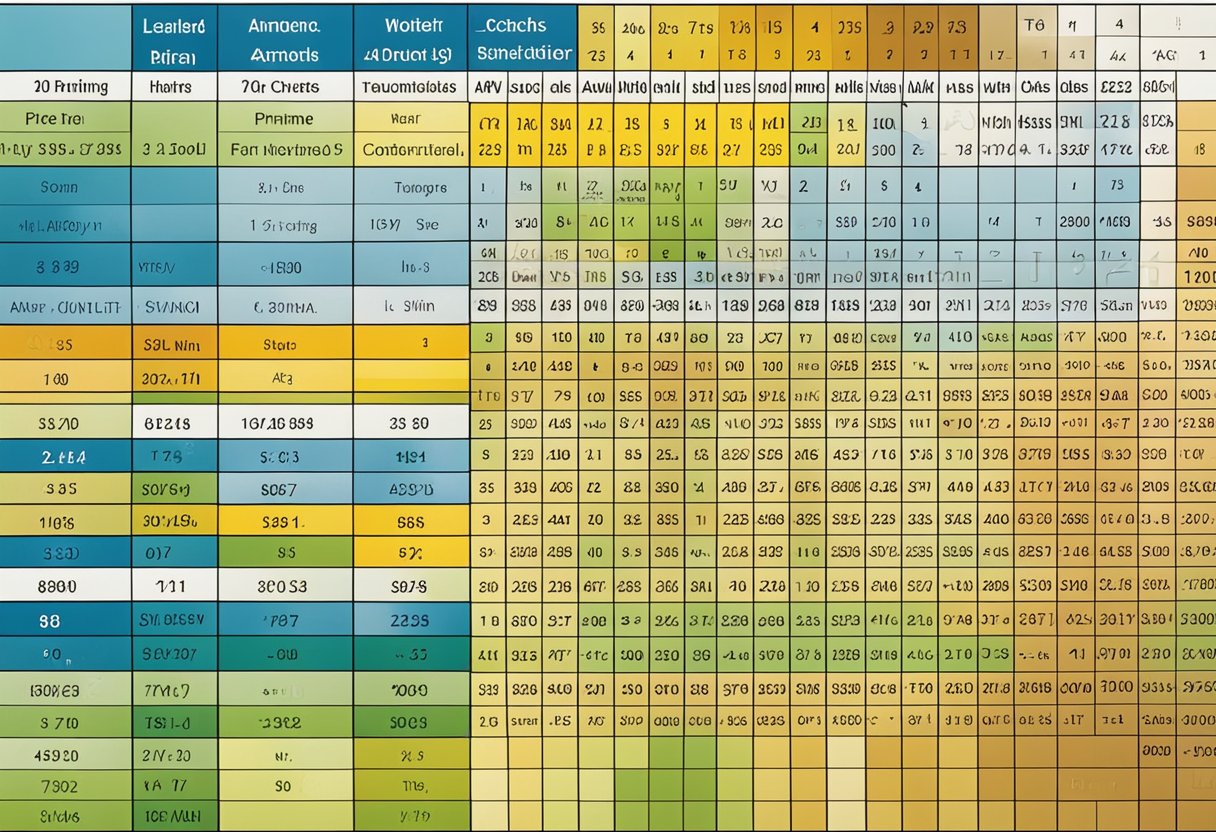Ever received a call from an unknown number and wondered who it might be? You’re not alone. Many people search for ways to identify mystery callers without paying for expensive services.
Several free reverse phone lookup tools can help you discover who owns a phone number by searching public databases and directories.

When mysterious calls come in, it’s natural to want answers. Whether you’re getting repeated calls from an unfamiliar number or trying to verify someone’s identity, free phone number search services can provide basic information about the caller.
These tools use publicly available data to match phone numbers with names, locations, and sometimes additional details.
Key Takeaways
- Free reverse phone lookup services like Truecaller and Whitepages can identify unknown callers without requiring payment or registration.
- Most free phone number search tools provide basic information such as the carrier, location, and sometimes the owner’s name.
- Users should understand that free lookup services have limitations compared to paid options and may not provide complete or current information for all numbers.
Understanding Reverse Phone Lookup
When you receive calls from unknown numbers, reverse phone lookup tools can help identify who’s behind those mysterious digits. These services have become essential in today’s digital world where phone privacy concerns are on the rise.
What Is Reverse Phone Lookup?
Reverse phone lookup is a search process that lets you find information about who owns a phone number by entering the digits into a search tool.
Instead of searching for a number using a person’s name, this method works backwards – you start with the phone number to discover the owner’s identity.
These services typically provide details such as:
- The owner’s name
- Location information
- Carrier details
- Sometimes additional contact information
Both cell phone and landline numbers can be searched using reverse lookup tools. Many platforms offer basic information for free, while more detailed reports might require payment.
Free reverse phone lookup services like Lookify.io can provide general location and carrier information without charging fees.
How It Works
Reverse phone lookup services maintain vast databases of phone numbers and their associated information. When someone enters a number, the system searches through these databases to find matching records.
These databases are compiled from various sources including:
- Public records
- Social media profiles
- Phone directories
- Business listings
- User-submitted information
The search process happens almost instantly. Users simply enter the full phone number into a search field and click on the search button.
For example, Truecaller allows users to find caller information within seconds.
Most services display the results on-screen immediately. The information provided varies depending on the service and whether it’s free or premium.
Benefits of Using Reverse Phone Lookup
Reverse phone lookup services offer several important advantages for everyday users. First, they help identify unknown callers, which is especially useful for screening potential spam or scam calls.
Security is another major benefit. Users can verify if a call is legitimate before sharing personal information. This helps protect against phone-based fraud attempts that are increasingly common.
For personal safety, these tools let people:
- Identify potential stalkers or harassers
- Verify the identity of online marketplace sellers
- Screen calls before returning them
Services like SpyDialer allow users to look up information anonymously, protecting their own privacy while investigating unknown numbers.
Many basic reverse phone number search functions are available for free, making this safety tool accessible to everyone regardless of budget.
Exploring Free Phone Number Lookup Services
Finding who’s behind an unknown phone number doesn’t always require paying for the information. Several free tools can help identify callers, though they come with certain limitations compared to paid options.
Free vs. Paid Services
When searching for phone number information, you’ll encounter both free and paid options.
Free services typically provide basic details like the carrier, general location, and sometimes the owner’s name. These services are perfect for quick lookups when you just need basic information.
Paid services offer more comprehensive data, including full name, address history, social media profiles, and other personal details. They usually charge either a one-time fee or require a subscription.
The main difference lies in data completeness. Free services might show partial information or offer “teasers” to encourage upgrading to paid versions. Despite limitations, free services can still be incredibly useful for the initial screening of unknown numbers.
Popular Free Lookup Services
Truecaller is one of the most widely used free options, allowing users to find out who called within seconds. It works through a community-based system where users contribute to the database.
Spokeo offers a free reverse phone lookup that can reveal if they have information about a number before requiring payment for full details.
Another helpful tool is IPQS, which provides a free phone number lookup service for mobile, landline, and VOIP numbers, showing carrier and location information.
For those concerned with privacy, Lookify.io can provide general location and carrier details without extensive personal information.
SpyDialer allows users to find information about phone numbers anonymously, making it ideal for those who want to maintain their privacy while searching.
Limitations of Free Services
Free phone number lookups come with notable restrictions. Most free services only provide partial information, often showing just enough data to entice users to pay for complete details.
Data accuracy can be inconsistent with free tools. Since they often rely on user-contributed information or publicly available data, the results may be outdated or incomplete.
Many free services also impose search limits. You might be restricted to a certain number of lookups per day or month before hitting a paywall. Some services like Truecaller and Spokeo may display ads or continuously prompt for upgrades.
Privacy concerns exist too. Some “free” services collect your search data or require you to share your contacts to use their platform. Always read the privacy policy before using these tools to understand what information you’re giving away.
Navigating Privacy and Legal Considerations

Finding phone number owners involves important legal and ethical boundaries that protect personal information. While public records offer some access, understanding privacy laws and respecting consent helps ensure you stay on the right side of both law and ethics.
Privacy Laws
Phone number lookups are subject to various privacy regulations that limit how personal information can be accessed and used.
In the United States, the Telephone Consumer Protection Act (TCPA) restricts certain phone-related activities, while the Fair Credit Reporting Act (FCRA) regulates how consumer information can be used for background checks.
Many people lookup websites operate legally by only providing information that’s already part of public records. However, different countries and states have varying laws about data protection.
The European GDPR imposes strict rules on personal data usage, making some lookup services unavailable in those regions. Always check if a service complies with local privacy laws before using it.
User Consent
Consent forms the foundation of ethical phone number lookups. When someone shares their phone number publicly on websites or directories, there’s an implied level of consent for that information to be findable.
However, finding information through investigative methods should be approached carefully. The person hasn’t necessarily agreed to have their details discovered this way.
Some key points about consent:
- Direct permission is always best before searching for someone’s details
- Commercial services often require you to confirm you have legitimate purposes
- Implied consent exists when someone posts their number publicly
- Notification may be required in some jurisdictions before using found information
Responsible Use of Information
Once you’ve found the owner of a phone number, using that information ethically matters just as much as how you obtained it.
Responsible use means having legitimate reasons for your search, such as reconnecting with old friends or verifying a business contact.
Avoid using personal information for:
- Harassment or stalking
- Unwanted marketing
- Impersonation or fraud
- Sharing with unauthorized third parties
The complexity of privacy considerations means each search should be evaluated individually. Ask yourself if your reasons for looking up someone’s information would seem reasonable to an objective observer.
Free lookup services often have limitations precisely because of these ethical boundaries. They balance providing useful information with protecting individual privacy rights.
Dealing with Unwanted Calls and Spam

Getting strange calls from unknown numbers can be frustrating and sometimes dangerous. The good news is there are several ways to identify, block, and report these unwanted calls to protect yourself and reduce interruptions.
Identifying Spam Calls
Spam calls often share common characteristics that can help you spot them before answering. Many display unusual area codes or use similar first digits to your own number to trick you into thinking it’s a local call.
Be cautious when the caller ID shows “Unknown,” “Private,” or a number very similar to yours. This could be call spoofing, where scammers fake their number.
Listen for these warning signs if you do answer:
- A recorded message instead of a live person
- Immediate requests for personal information
- Pressure to make quick decisions
- Offers that sound too good to be true
Trust your instincts! If something feels off about the call, it probably is. Legitimate callers won’t mind if you hang up and call back using a number you find yourself.
Blocking Nuisance Calls
Several effective methods exist to block unwanted calls before they disturb you.
Start by registering your phone number with the National Do Not Call Registry, which is free and helps reduce legitimate telemarketing calls.
Your smartphone likely has built-in call blocking features. On iPhones and Android devices, you can block specific numbers after receiving a call. Many carriers also offer their own blocking services—like Verizon’s Call Filter, which helps identify and block spam.
Third-party apps provide even stronger protection.
Apps like Robokiller can block up to 99% of spam calls by using massive databases of known scam numbers. Some even answer spam calls with time-wasting bots to discourage future calls!
For landlines, ask your provider about call-screening services or consider purchasing a call-blocking device that connects to your phone.
Reporting Unwanted Calls
Reporting spam and nuisance calls helps authorities track and stop these activities. When you receive an unwanted call, take note of the number, time, and any company names mentioned.
You can easily file a complaint with the FCC if you believe you’ve received an illegal call or text. The FTC also accepts reports through their website about violations of the Do Not Call Registry.
Many call-blocking apps include simple reporting features that let you flag numbers with just a tap. This helps build their databases and protects other users.
If you suspect the call was attempting to scam you, consider reporting it to your state consumer protection office too. Your phone carrier might also have their own reporting system to help identify problem numbers.
Remember that reporting unwanted calls might not stop them immediately, but it contributes to the larger effort to reduce spam calls for everyone.
Identifying Different Types of Numbers

Phone numbers contain important clues that can help you figure out who’s calling. Knowing how to read these clues makes it easier to identify unknown callers without paying for premium services.
Understanding Area Codes
Area codes are the first three digits of a phone number and tell you where a call is coming from. These codes are assigned by geographic region across the United States and Canada.
When you receive a call from an unknown number, the area code can reveal the caller’s general location. For example, 212 typically means Manhattan, while 305 indicates Miami. This information is helpful when deciding whether to answer.
You can look up area codes online to check if a call matches where the person claims to be from. Many scammers use area codes that don’t match their claimed location.
Some newer area codes overlap with older ones in the same region. This is called an “overlay” and happens when an area runs out of available numbers.
Unlisted and Private Numbers
Unlisted numbers don’t appear in public phone directories but aren’t completely anonymous. These numbers still belong to real people or businesses who’ve chosen privacy.
When a number shows as “Private,” “Unknown,” or “No Caller ID,” the caller has blocked their number from displaying. However, this doesn’t mean you can’t discover who they are.
Some free reverse lookup tools can still identify unlisted numbers, though their success varies. These services check against databases beyond public directories.
For truly persistent private callers, you might need to:
- Ask your phone company about call tracing
- Use call-blocking apps that gather community reports
- Try calling back with *67 before the number (though this doesn’t always work)
Mobile vs. Landline Numbers
Telling the difference between mobile and landline numbers can help identify who’s calling. Mobile numbers are assigned to individuals, while landlines might belong to households or businesses.
Most reverse phone lookup services will identify whether a number is mobile or landline. This helps you know what to expect when returning a call.
Mobile numbers are more likely to be:
- Personal rather than shared
- Portable when people move to new areas
- Linked to text messaging capabilities
Landlines typically have more stable locations and may be associated with physical addresses that are easier to verify. They’re also more likely to appear in traditional phone directories.
VoIP (Voice over Internet Protocol) numbers represent a third category. These internet-based numbers are increasingly common and can be harder to trace as they don’t have the same physical connection requirements.
Enhancing Your Search with Additional Resources

Finding out who owns a phone number often requires using multiple tools together. These additional resources can help you uncover information that basic lookup services might miss.
Using Social Media Profiles
Social media platforms can be valuable tools for identifying phone number owners. Many people link their phone numbers to their social media accounts, making it easier to find them.
Try searching the number on Facebook, which sometimes allows you to find profiles directly through its search function. Facebook’s people search can reveal accounts connected to specific phone numbers.
Instagram and Twitter might also help, though they offer less direct phone number searching. Instead, look for the number in public posts or messages.
LinkedIn can be particularly useful for business-related numbers. Many professionals list their contact information on their profiles.
Remember that privacy settings may limit what information is visible. Not everyone connects their phone number to their social media or makes it publicly searchable.
Background Checks and Public Records
Public records can reveal phone number ownership when other methods fail. These records are maintained by government agencies and are often accessible online.
Some useful public records include:
- Voter registration information
- Property tax records
- Court documents
- Business registrations
- Marriage and divorce records
Many websites offer free access to limited public records. Some popular options include county clerk websites and state business databases.
For more comprehensive searches, consider using free background check tools. These platforms aggregate public information from multiple sources.
Be aware that accessing certain public records might require visiting government offices in person or paying small fees for official documents.
Leveraging Phone Directories
Traditional and online phone directories remain helpful for finding number owners, especially for landlines. These directories compile contact information that can be searched in reverse.
Popular free phone directories include:
- WhitePages
- YellowPages
- AnyWho
- True Caller
Many of these services offer basic information without charge, showing the general location and type of phone (mobile, landline, or VoIP).
Some directories specialize in business numbers, while others focus on residential listings. Try multiple directories since coverage varies between services.
Local libraries often provide free access to premium phone directories that might otherwise require payment. Ask a librarian about electronic or physical directory resources they offer.
Cross-referencing information between different directories can help verify the accuracy of your findings.
Optimizing The Use of Phone Lookup Services
When searching for phone number information, getting the most out of free lookup services requires smart strategies. These approaches help users maximize results without paying for premium services.
User-Friendly Interface Features
The best free phone lookup services offer clean, easy-to-navigate interfaces. Look for platforms with simple search bars prominently displayed on the homepage. This saves time and reduces frustration.
Many top services like SpyDialer offer mobile-friendly versions that work well on smartphones. This is helpful when you need to look up a number while on the go.
Filter options can narrow down results based on location, carrier, or phone type. These features make finding the right information much faster.
Some services offer one-click copy functions for contact details. This small feature saves time when you need to save or share information quickly.
Making the Most Out Of Free Trials
Many premium lookup services offer limited free trials. Use these strategically to search your most important numbers first.
Create a list of priority numbers before starting any free trial period. This ensures you check the most critical numbers before the trial expires.
Some services like SEON offer a certain number of free lookups before requiring payment. Track your usage to avoid unexpected charges.
Consider using different free trials across multiple services for more comprehensive results. Each platform often has different data sources.
Remember to cancel trial subscriptions before they convert to paid plans if you don’t wish to continue.
Tips for Efficient Searches
Always include the area code when searching for numbers. This improves accuracy and reduces false matches in the results.
Try multiple free platforms like Lookify.io for basic information and SpyDialer for more detailed results. Different services access different databases.
Many free services limit how many times you can look up the same number, so save search results immediately.
Use carrier lookup tools first to identify the phone provider. This can help narrow down your search options.
Be patient with search results. Free services sometimes take longer to compile information than paid alternatives.




